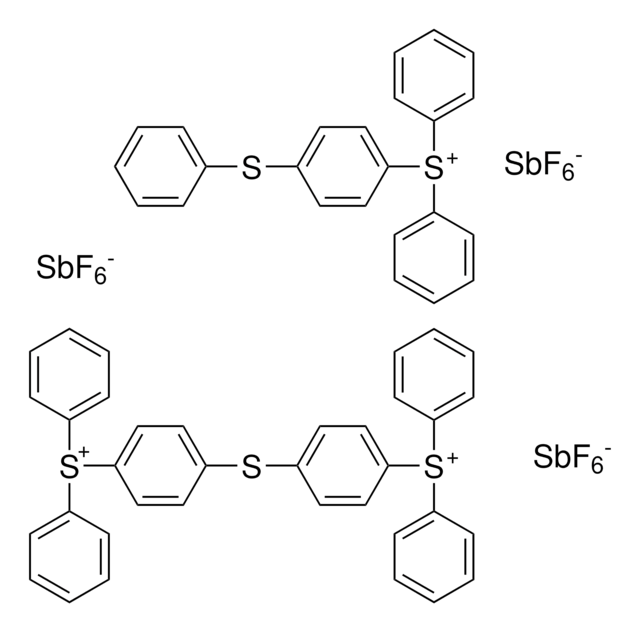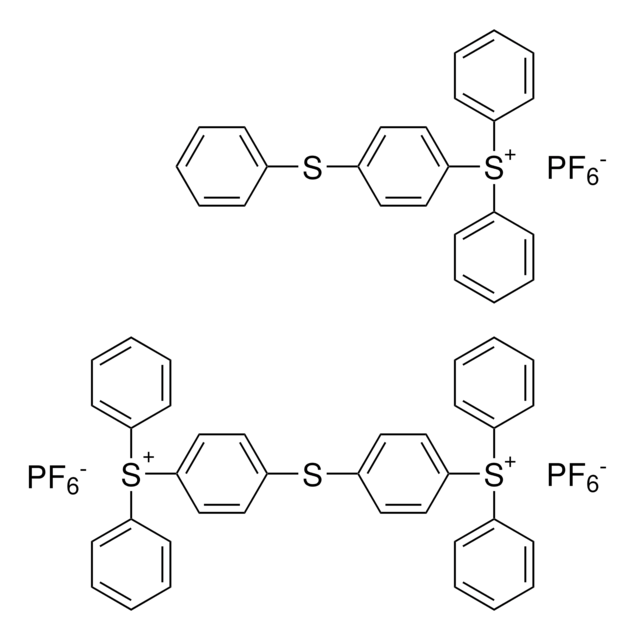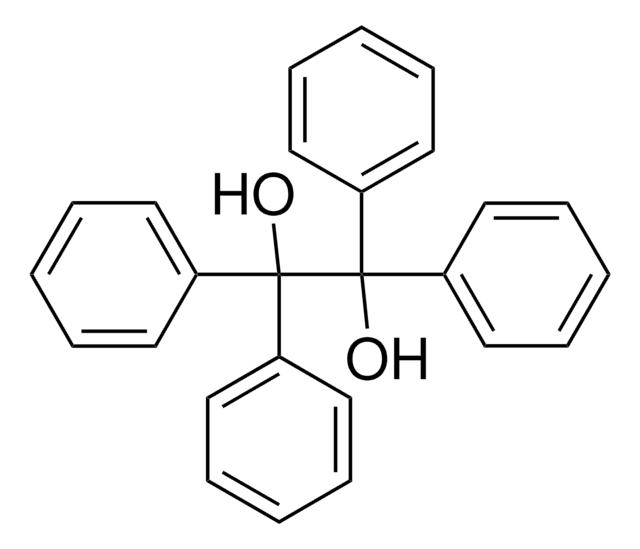407208
3,4-Epoxycyclohexylmethyl 3,4-epoxycyclohexanecarboxylate
Synonim(y):
3,4-Epoxycyclohexanecarboxylic acid (3′,4′-epoxycyclohexyl)methyl, 3,4-Epoxycyclohexanecarboxylic acid (3,4-epoxycyclohexylmethyl) ester
About This Item
Polecane produkty
Postać
viscous liquid
współczynnik refrakcji
n20/D 1.498 (lit.)
mp
−37 °C (lit.)
gęstość
1.17 g/mL at 25 °C (lit.)
ciąg SMILES
O=C(OCC1CCC2OC2C1)C3CCC4OC4C3
InChI
1S/C14H20O4/c15-14(9-2-4-11-13(6-9)18-11)16-7-8-1-3-10-12(5-8)17-10/h8-13H,1-7H2
Klucz InChI
YXALYBMHAYZKAP-UHFFFAOYSA-N
Opis ogólny
It can be synthesized by the reaction of 3′-cyclohexenylmethyl 3-cyclohexenecarboxylate with peracetic acid. Its aliphatic backbone and molecular structure provide a number of useful properties such as thermal stability, weatherability, and electrical conductivity.
Zastosowanie
- A reactive diluent or a cross-linking agent in the preparation of flame retardant epoxy composites, which finds application in the electricals, textiles, electronics, and transportation.
- A monomer in the synthesis of polymeric gels, which can have applications in controlled release systems, drug delivery, or sensors.
Hasło ostrzegawcze
Warning
Zwroty wskazujące rodzaj zagrożenia
Zwroty wskazujące środki ostrożności
Klasyfikacja zagrożeń
Aquatic Chronic 3 - Skin Sens. 1
Kod klasy składowania
10 - Combustible liquids
Klasa zagrożenia wodnego (WGK)
WGK 3
Temperatura zapłonu (°F)
244.4 °F - closed cup
Temperatura zapłonu (°C)
118 °C - closed cup
Certyfikaty analizy (CoA)
Poszukaj Certyfikaty analizy (CoA), wpisując numer partii/serii produktów. Numery serii i partii można znaleźć na etykiecie produktu po słowach „seria” lub „partia”.
Masz już ten produkt?
Dokumenty związane z niedawno zakupionymi produktami zostały zamieszczone w Bibliotece dokumentów.
Klienci oglądali również te produkty
Nasz zespół naukowców ma doświadczenie we wszystkich obszarach badań, w tym w naukach przyrodniczych, materiałoznawstwie, syntezie chemicznej, chromatografii, analityce i wielu innych dziedzinach.
Skontaktuj się z zespołem ds. pomocy technicznej









